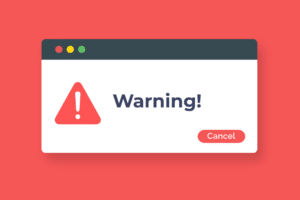More than $20 million in USDT and USDC stablecoins on PulseChain are in the balance, vulnerable to potential blockades by their respective issuers, Tether and Circle.
We explore impending risks that cast a shadow over this substantial digital asset presence.
Risks to more than $20 million in USDT and USDC stablecoins on PulseChain
In the rapidly evolving world of cryptocurrencies, PulseChain has emerged as a promising blockchain platform.
However, recent developments have raised concerns about the security of over $20 million USDT (Tether) and USDC (Circle) tokens on PulseChain.
This article delves into the details of this situation, focusing on the potential risks associated with these bridge tokens.
PulseChain, an innovative blockchain, offers users the ability to bridge assets from other blockchains.
In this case, these are USDT and USDC, two important stablecoins in the crypto space. The bridging mechanism allows users to transfer these tokens from their original networks to PulseChain, thereby facilitating various decentralized applications and transactions.
While this integration offers exciting opportunities, it also introduces a critical issue: the potential freezing of these tokens by their respective issuers.
Authority of Tether and Circle
Tether, the issuer of USDT, exercises significant authority over its tokens. A major concern about USDT on PulseChain is the centralized nature of Tether itself.
In the past, Tether has been criticized for its lack of transparency and its ability to freeze or confiscate tokens when necessary. This centralization raises questions about the autonomy of activities on PulseChain and the potential implications for users.
USDC, on the other hand, is issued by Circle, another major player in the stablecoin arena. Although USDC has presented itself as a more regulated and transparent stablecoin, it still operates under the authority of its issuer.
Circle has demonstrated its willingness to comply with regulators, and this could potentially lead to actions that impact USDC holders on PulseChain. Users should be aware of the inherent risks associated with any centrally issued token.
The risk of freezing
Both Tether and Circle have the power to freeze their respective tokens under certain circumstances. This risk becomes more pronounced when these tokens are linked to PulseChain.
Any legal or regulatory action taken against issuers could potentially lead to the freezing of these tokens, leaving PulseChain users in a precarious situation. The very essence of decentralization in the cryptocurrency space is challenged when centralized assets are involved.
To mitigate these risks, PulseChain users should consider diversifying their holdings and exploring decentralized alternatives to stablecoins.
Crypto-native stablecoins such as DAI, which operate on decentralized platforms, offer greater autonomy and security. In addition, users can use decentralized exchanges and liquidity pools to minimize exposure to centralized assets.
Conclusion
The power vested in the issuers of USDT and USDC, namely Tether and Circle, cannot be underestimated. Their ability to freeze tokens, ostensibly to comply with legal or regulatory mandates, challenges the very essence of decentralization and autonomy upon which the cryptocurrency space was founded.
While these actions can be seen as necessary to maintain regulatory compliance, they also highlight the delicate balance between the traditional and decentralized financial worlds.
For users navigating the PulseChain terrain, risk mitigation is critical. Diversifying holdings in different assets, including decentralized stable currencies such as DAI, provides a layer of security against the potential freezing of USDT and USDC.
Decentralized cryptoo exchanges and liquidity pools can also provide alternatives and safeguards, ensuring that users are not overly exposed to centralized assets.
In essence, the plight of over $20 million of USDT and USDC on PulseChain reminds us of the need for vigilance, diversification, and a thorough understanding of the assets being held in the cryptocurrency world.
As this space continues to evolve, users must remain adaptable, informed, and prepared to navigate the ever-changing landscape of risks and opportunities that define the world of blockchain and digital assets.







